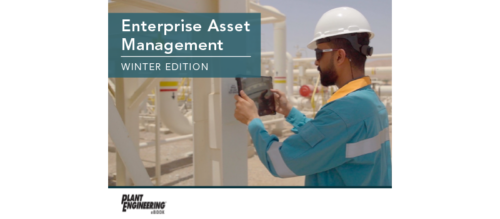Groups collaborate on sensor-to-cloud interoperability
Cover Story: The FDT Group and OPC Foundation have collaborated on off-the-shelf interoperability designed to help plants, factories, and other industrial facilities gain access to enterprise-wide, sensor-to-cloud interoperability and enhanced lifecycle management throughout the industrial sector. See what standards apply, and how they’re helping.
Since 2011, the FDT Group and OPC Foundation have collaborated on an off-the-shelf interoperability designed to help plants, factories, and other industrial facilities gain a higher return on their use of open standards. The collaborative effort is trying to open the door to enterprisewide, sensor-to-cloud interoperability and enhanced lifecycle management throughout the industrial sector (see Figure 1).
Establishing open standards
Understanding ongoing FDT and OPC standard developments and the benefits they deliver in process, hybrid, and factory automation requires a brief history lesson.
The FDT standard was introduced in 1998 and incorporated in the IEC 62453, ISA103, and China GB/T 29618 standards. It is designed to provide an open, vendor-neutral communication and configuration interface between field devices and host systems. This includes a common environment for accessing the devices’ sophisticated features (see Figure 2).
The standard consists of two main software components: a frame application (FDT/Frame), which renders a graphical user interface (GUI), and a device type manager (DTM) that functions as a device driver to give manufacturers control of the attributes displayed for a given device. The frame application can be embedded in a programmable logic controller (PLC) programming tool, a distributed control system (DCS), an asset management system, or as a standalone configuration tool. FDT 2.0, the latest update, is designed to support modern operating environments and uses the Microsoft .NET technology platform.
The OPC standard, introduced in 1996, is designed to allow secure and reliable data exchanges across manufacturing and other enterprises. The OPC Unified Architecture (OPC UA) is a platform-independent, service-oriented architecture that integrates the original OPC specification functionalities into one framework.
The FDT standard is designed to be the hub of critical information, while the OPC UA standard provides the infrastructure to make this information available to other applications and platforms. Together, the standards allow sensor, network, and topology information to permeate enterprise resource planning (ERP) systems, the cloud, the Industrial Internet of Things (IIoT), and Industrie 4.0.
Enabling off-the-shelf interoperability
The FDT/OPC joint project envisioned a standard plug-in for the FDT 2.0 standard that would provide connectivity to enable data communication throughout the enterprise using the OPC UA standard. This approach exemplifies the device-to-cloud computing strategy that supports configuration, diagnostics, asset health, communication, historical data access, and alarming and event services for existing and upcoming devices that have FDT support.
The FDT standard incorporates a plant hierarchy based on physical network topology coupled with a logical topology. The network protocols in the industry allow a frame application system to talk with any device. This includes the ability to transparently tunnel through disparate network to access the end device. The frame application also receives operational lifecycle access to commissioning, diagnostic, prognostic, and other high-level data. To make these data sources available to the OPC UA architecture, the data has been mapped to the OPC UA data model, and the FDT/Frame-enabled system is configured as an OPC UA server (see Figure 3).
The client can request a secure connection with the FDT/OPC server and access topology, health, and other data. Any number of clients may gain access, limited only by the server’s capacity and underlying network bandwidths.
Optimize network, device management
System manufacturers can use the server annex for implementation. System suppliers with the frame application embedded in a DCS, PLC, or other system now have the ability to include an OPC UA server in an application that is accessible from any client application.
Information integration provided by DTMs and other device drivers into the information model is an important capability for device diagnostics, configuration, remote asset management, and integration with a manufacturing execution system (MES). The information model is designed to enhance network and device management, which helps optimize the enterprise by giving access to data without the need for protocol-specific handling. It also provides support for devices that have not previously been supported.
Networks and devices can be configured in a normal engineering tool using DTMs or other device representations such as electronic device descriptions (EDDs) and field device integration (FDI) device packages. Information provided by the DTMs—device type, parameters, input/output (I/O)—help complete the information model. The collaboration is intended to increase the richness of the information model while leveraging the servers, which are omnipresent in automation architectures that transmit and route information.
The method of communicating device and machine data using an industrial device information model is designed to combine local control and monitoring with global overview and aggregation. This is a good example of Big Data because it supports better and faster decision-making.
Control network connectivity
The frame application has access to all control networks in the facility as well as all supported devices attached to the networks. It also has knowledge of the complete control system topology. The OPC UA server within the frame application allows any client application to browse the control architecture’s topology as well as select any instrument on the network to obtain crucial data about that device. The frame application automatically routes the traffic across all networks with the network directly connected to the client (see Figure 4).
Any off-the-shelf OPC UA client with the right security privileges can access the server embedded in the frame application. This concept offers many interesting possible applications for this functionality. A maintenance technician with a mobile app deployed on an Android- or iOS-based device can take that mobile device onto the plant floor and gain access to critical device information to keep the application running or quickly bring it back online. To the operator, it will appear as if the wireless device is directly connected to the asset without any custom code or other application, which is possible because of the interfaces.
Future platform independence
The annex provides sensor-to-cloud, enterprisewide data communication for industrial end users looking to take advantage of the IIoT and Industrie 4.0. FDT is looking to go a step further and establish an IIoT solution that supports mobility, on-the-wire security, and interoperability while being platform-independent and deployable in standalone client/server or cloud architectures.
The combined FDT/OPC standards are designed to create one system infrastructure that standardizes industrial networks, automation systems, and device connections. Remote access to connected machines, production units, and devices help drive performance improvements. This approach helps unify system engineering, configuration, and diagnosis support for Industrie 4.0 devices and builds a bridge to Industrie 3.0 networks and devices (see Figure 5).
The technical collaboration is aimed at ensuring seamless online data exchange between automation systems, asset management systems, and other plant enterprise systems and applications. This is designed to help industrial end users take the data and information models and leverage the modeling and corresponding services for complete application-to-device integration.
Glenn Schulz, managing director, FDT Group. Edited by Chris Vavra, production editor, Control Engineering, CFE Media, cvavra@cfemedia.com.
MORE ADVICE
Key concepts
The FDT Group and OPC Foundation are collaborating on interoperability designed to enhance lifecycle management in the industrial sector.
Sensor-to-cloud interoperability helps improve data management and collaboration on the plant floor.
A seamless online data exchange helps end users complete application-to-device integration.
Consider this
What else can be done to improve sensor-to-cloud interoperability?
Do you have experience and expertise with the topics mentioned in this content? You should consider contributing to our CFE Media editorial team and getting the recognition you and your company deserve. Click here to start this process.




